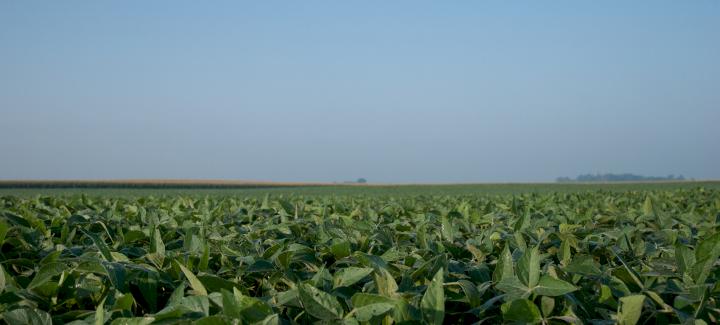
In our third and final installment of 2020 Lessons Learned, we check in with Corn Technical Agronomist Bill Kessinger who supports agronomists and sales reps in our eastern sales territory, from Wisconsin, Ohio and Michigan to the East Coast. Bill discusses the varying environmental conditions of 2020 and the products that stood up to the toughest conditions in his region.
A Year in Review from the Eastern Agronomy Team
By: Bill Kessinger, Corn Technical Agronomist
Last year is definitely a year to remember. I have the opportunity to work with the eastern division of Stine®, which covers east of the Mississippi River to the Atlantic Ocean, excluding the southern Delta region of our country. Every year is different, and 2020 was certainly eventful. Some regions of the division dealt with drought conditions, others with flood conditions and some with the derecho wind event. Despite all the challenges, I believe most growers were pleasantly surprised by how well the crops turned out.
The northern part of Illinois along with southeast Wisconsin and parts of Michigan started out extremely wet, causing several issues with delayed planting and, in some areas, replant situations. The majority of the eastern division got planted under good conditions and earlier than normal. Unfortunately, early planting can sometimes lead to a frost event that did happen in 2020 and affected northern Indiana, northern Ohio and southern Michigan. Fortunately, the frost did not do as much damage as expected.
The timely planting in most areas allowed for timely post-spray applications in soybeans. Weed control across those acres was good. The growers who fought excess water throughout the early growing season tended to fight weed issues most of the summer. One of the largest issues growers faced, even with the increased dicamba spray regulations, was the largest amount of offsite dicamba damage to date. With the stricter regulations and the increasing acreage of Enlist E3® soybeans, the number of damaged acres will hopefully decrease in 2021.
Disease pressure was also low in many areas. In the spring, we saw some soil-borne disease pressure in soybeans and corn across central and northern Illinois because of heavy rain events. Throughout the remainder of the season, disease pressure trended low. Northwest Ohio was in a severe drought, so disease pressure was not expected, but the majority of the eastern division had fairly timely rains. White mold and SDS pressure in soybeans were low along with grey leaf spot and northern corn leaf blight in corn. Tar spot was still an issue in places, and we are starting to find it farther south than we have in the past. The above-average sunny days and favorable temperatures pushed GDUs at a rapid pace throughout August and September, leading corn to mature quickly. This led to dry corn throughout harvest but also may have caused some lower-than-average test weights in certain geographies.
The positive side of being a genetics company and working a large geography is that you get to see and analyze data across different environmental conditions. The Enlist E3 platform as a whole was impressive, and we did have a couple of standout hybrids and varieties that worked across the different conditions. The soybean products that jumped out are Stine 24EA12, 27EA2, and 34EA12, which all handled those stress situations tremendously and packed a yield punch. Farther south, Stine 39EA02 and 41EA12 continued to be top yielders. Looking at our corn hybrids, the fuller season maturities such as Stine 9734 and 9814 stood out and were able to handle those tougher acres extremely well. Stine 9808E and 9709 excelled in better soil conditions in higher-yield environments. A little farther north, some earlier hybrids that continue to be top performers are Stine 9212 and 9436. Stine 9319 and 9547 looked tremendous in testing; I am excited to see them out in 2021!
Last year was difficult, and I have no doubt 2021 will hold its share of challenges. The Stine Agronomy Team is looking forward to those challenges. The diverse genetic and technology options at Stine, along with an exceptional group of people to work with, leave no doubt that 2021 will be a success for Stine and our grower customers. Visit our Find Stine page to connect with your local Stine agronomist and discuss plans for the upcoming planting and growing season.
Related Articles
-

Stine® to offer Syngenta’s Victrato® soybean seed treatment in 2026
December 2025 in Agronomy
-

Use Stine’s XP® seed treatments to prevent early injury to your crops
December 2025 in Agronomy
-

Understanding Stine’s enhanced oil profile soybeans
December 2025 in Agronomy
-

Soil sampling sets the stage for spring
November 2025 in Agronomy



